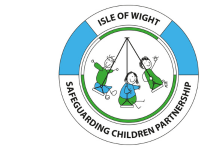Overview
Research indicates that it is very unusual for infants who are not independently mobile to sustain bruises accidentally, and bruising in this age group raises significant concerns about physical abuse. Studies suggest that young babies rarely have an accidental bruise and that there should be a clear explanation for these injuries.
National and local serious case reviews have identified the need for heightened concern about any bruising or injury in a baby who is not independently mobile. It is important that any suspected bruising is fully assessed, even if the parents are able to provide an explanation for it. The younger the baby, the more serious should be the concerns about how and why even very tiny bruises on any part of the child are caused.
There are a number of cases reported where an infant who is significantly abused has previously had a less significant, sentinel injury, which has been seen by professionals and the child was not protected.
Injuries to children must never be interpreted in isolation and must always be assessed in the context of medical and social history, developmental stage, explanation given, full clinical examination and relevant investigations. The social history should include any relevant information from children’s services and police checks on the adult carers.
Any explanation for actual or suspected bruising or other injury in an infant who is not independently mobile needs to be assessed by a health professional with appropriate competency – usually a consultant paediatrician.
Parents or carers should be included, as far as possible, in the assessment and decision-making process regarding their child, unless to do so would jeopardise the information gathering or pose a further risk to the child.
Given the vulnerability of non-mobile infants, a specific protocol is necessary to safeguard these children: Protocol for the management of actual or suspected bruising or other injury in infants who are not independently mobile.
A practitioner guide has been developed to support professionals in the use of the protocol.
The term ‘not independently mobile’ applies to those infants who are not yet rolling, crawling, bottom shuffling, pulling to stand or cruising, that is, those infants who cannot move themselves from where they are placed. However, practitioners should be aware that the likelihood of accidental bruising increases with increasing mobility; so for example, there would be more concern about bruising seen in a baby who is only just beginning to roll, than one who is walking.
A bruise is a temporary, non-blanching discolouration of skin, however faint or small, with or without other skin abrasions or marks. Colouring may vary from yellow, through green, to brown or purple.
A bruise is caused by blood that has leaked out of capillaries or other blood vessels into soft tissues under the skin. The age of a bruise cannot be determined by its appearance.
Other injuries include all possible injuries to infants, for example, cuts, scratches, abrasions, burns, scalds, fractures and dislocations (this list is not exhaustive). Please note that these injuries will be seen on the skin and other external surfaces of the body, including the eyes and inside the mouth. (see Section 7 of the protocol). A fracture or dislocation may cause swelling and lack of movement of the affected limb.
A birthmark is a permanent mark on the body that is present at, or soon after, birth – usually within the first month.
Birthmarks can be either pigmented (coloured), hypopigmented (pale) or vascular (due to increased blood vessels in or under the skin). Some may blanch, but some, like bruises, may not blanch (see Section 7 of the protocol).

